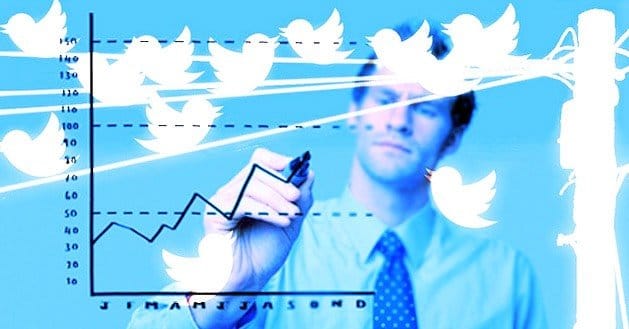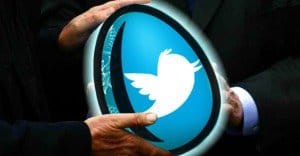 Written by ContentPowered.com
Written by ContentPowered.com
Twitter is a potent platform with a number of forms of engagement to measure as you strive to improve your message and brand presence. Learning what these forms of engagement are, and how to measure them through Twitter’s analytics, is important for growth. Let’s get to it.
Types of Engagement
There are four major forms of engagement a user can use, with a fifth that’s harder to measure. They are:
- Replies. These are tweets a user makes that are directly responding to you or talking to you. They use the @mention feature to gain your attention and deliver a message directly.
- Mentions. These are instances where a user makes a tweet about your brand using the @mention feature, but they don’t address the message to you directly. Instead, they’re mentioning you indirectly while flagging your account so you see.
- Indirect mentions. These are the hardest to measure and require the use of social listening tools. These are the times when a user mentions your brand but does not @mention your username, so you aren’t notified.
- Retweets. These are cases where a user either manually copies and pastes your tweet into their feed prefaced with RT, or when they click the dedicated retweet button. It broadcasts your message to their followers.
- Favorites. A user can favorite a tweet you make, which doesn’t retweet it or reply to it, but nonetheless shows some appreciation for your content. They are very much akin to a Facebook “like.”
Additionally, hashtags can be important when you create tags for specific discussions or ad campaigns. Use of a branded hashtag is both a way to gain your attention and a sign of further engagement.
Measuring Followers
Knowing where you stand with your followers, your growth trends, and a comparison with your competition is good to know. How are you growing, how are your competitors growing and how do you stand up?
First, measure your potential reach through your followers. Every person who follows you has people who follow them. Your one-step reach is the sum total of everyone who follows your followers. It’s not a completely accurate number; there may be some overlap, and it ignores followers of followers of followers and beyond, but it’s close enough.
Next, measure the followers your competitors have. Compare your totals, but remember that the grand total isn’t always as important as your growth. Measure the number of followers you gain each day and compare it to the same number for your competition. It can help you predict when you might catch up or surpass your competition.
You can also measure the number of users who mention your brand, retweet your tweets or favorite your messages while not actually being followers. These users represent an opportunity to gain pre-engaged followers.
While you’re measuring your followers, you can segment them by location. Do you have an outstanding following in a given area? If you’re a local business, should you focus more on a wider area or drill down to local users?
Another segmentation option is by engagement type. You can create archetypes of users who frequently retweet your content, or who mention you most often, to see what types of users are most engaged.
Measuring your share of voice will give you an indication of how vocal and how present you are in your arena. You need to pick important keywords and run searches for those keywords, identifying brand mentions for each. How often are you mentioned, compared to your competition?
Segment your voice share by location. This helps you identify geographical locations where you have the lead, and locations you may need to target if your competition is too strong. Location targeting can help you undercut the competition.
You can also measure the overall adoption of your branded hashtags – tags you create, rather than tags you participate in regularly – compared to your competition’s branded tags. Segment by individual tag so you can identify which tags are the most successful on both sides, which can inspire you for future tags.
Measuring Media Type
Different sorts of tweet content bring in different types and levels of engagement. In general, pictures are going to bring in the most engagement, while pure text posts will be the most common. Anything visual has more engagement than normal tweets. Measure exactly how much for each type of media you use.
You can further segment your media by source and type. When you post a video, is it a Vine, a YouTube video, a Vimeo or DailyMotion video or some other source? Which has the most engagement? You can do the same with images, though image host matters less than video host once you’re outside of the social network hosts.
Customer Service
One area where Twitter really shines is the customer service capability. Twitter is a fast, responsive and direct means of communication that bypasses slow email and tedious phone hold times. If you’re not using Twitter for customer service already, you should start. If you are, measure how it’s working.
First, measure customer service each step of the way. Find out how many brand mentions you have on your customer service account – if it’s separate from your main account – or how many mentions were asking for support. Measure how many of those people were contacted and how many of their issues were solved. Identify if there’s a flaw in your process, such as disregarding a certain type of communication.
In addition to response rate, you should also measure response time. How long does it take between a user tweeting you with an issue and their issue being resolved? Where are the delays; waiting on a response from you, or from the user? How can you improve the process?
Pay attention to the types of customer service you’re encountering. Are there any persistent issues you need to take care of in your product or service? What steps do you need to take to push a widespread solution, rather than dealing with users on an individual basis on Twitter?



